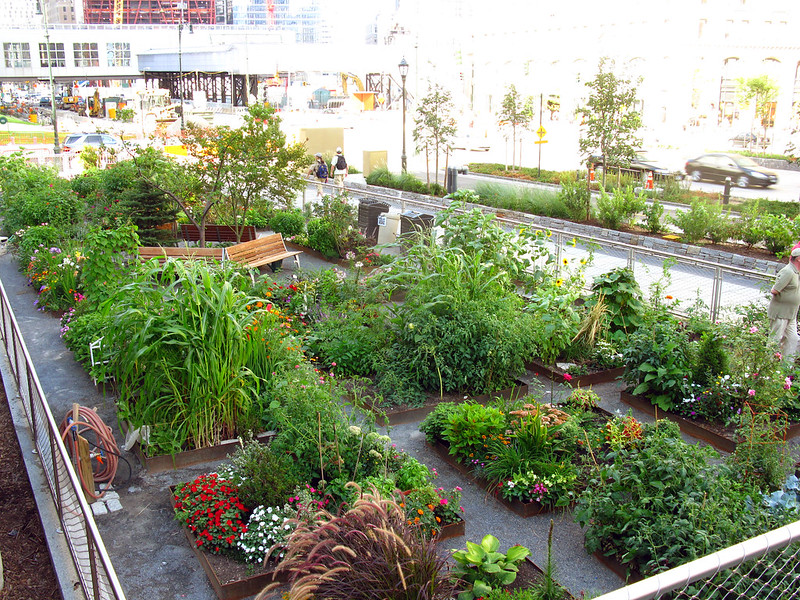Things about City Blooming
Things about City Blooming
Blog Article
The Facts About City Blooming Revealed
Table of ContentsUnknown Facts About City BloomingCity Blooming Things To Know Before You Get ThisCity Blooming Can Be Fun For AnyoneThe Main Principles Of City Blooming Things about City Blooming
Fascinated in growing food available for sale in the City of Chicago? Thinking about beginning a neighborhood garden? Adjustments to the Chicago Zoning Statute allow agricultural usages like neighborhood yards and urban farms in numerous parts of the city. Below is a checklist of regularly asked concerns regarding the regulations and guidelines that farmers ought to take into consideration when intending a metropolitan farming project.
The zoning modification does not customize any type of other codes managing composting, structure authorizations, acquiring or renting City had residential property, business licenses or environmental contamination. There are existing codes that regulate these issues and they remain completely result and might be appropriate to your task. Community yards are generally had or handled by public entities, civic companies or community-based organizations and preserved by volunteers.
Urban farms expand food that is intended to be offered, either on a nonprofit or for-profit basis. Because of their commercial purpose, metropolitan farms need an organization license. Yes. A neighborhood garden is enabled to sell surplus create that was expanded on website if the sales are accessory or subservient to the yard's primary function described over.
The Single Strategy To Use For City Blooming
Composting is permitted but only for plant material that is generated and used on site. The amount of garden compost product can not go beyond 25 cubic lawns at any offered time according to the criteria in 7-28-715 of the City's Municipal Code. Yes. Since the soil at most new garden websites requires amending, compost, dirt, timber chips, or various other materials can be acquired to create or enhance the growing space - sustainability.

If a building authorization is required then the hoophouse will certainly be taken into consideration an accessory building. You can figure out more about the building license needs by calling the Division of Buildings. The 25,000-square-foot size limitation is intended to avoid a solitary community yard from controling a provided block or diminishing the block's existing domestic or industrial character.
The limitation does not use to yards situated in Public Open Space (POS) areas. Can there be more than one neighborhood garden that is 25,000 square feet on a solitary block? Fence is not called for, nonetheless, gardens that have big auto parking locations might be needed to set up fence or other landscaping features.
City Blooming Things To Know Before You Buy
B1 & B2 areas call for that all business use tasks be performed indoors. Is fence needed for urban ranches? Fencings may be required, along with landscaping and testing, for specific auto parking areas and outside job or storage space areas depending on place and the particular activity taking area.
Yes. Urban ranches need building licenses and zoning approvals prior to building and construction. Various other forms of city review may be needed depending upon specific frameworks, activities, size, landscape design, licensing, public health and stormwater monitoring problems. A number of these needs are determined in the task useful reference style or allowing process, however, the candidate may be responsible to separately determine certain licenses or permits that might be needed.
The Division of Organization Matters and Consumer Protection can help determine the certain type of business permit that's called for. Off street vehicle parking is required for a lot of commercial jobs in Chicago. The needed number of parking rooms is based on the number of staff members functioning on site and not the square video footage of the expanding space.
The Greatest Guide To City Blooming

Yes. An urban farm can sell compost product produced on site, nevertheless, the procedure should adhere to the regulations in 7-28-715 of the Chicago Municipal Code. Yes. Aquaponic systems are enabled inside your home on metropolitan ranches in several zoning districts. Nonetheless, a zoning evaluation and structure permit is required in order to set up frameworks or systems and a business license is needed as explained above.
Approximately five hives or nests of honey may be maintained as an accessory use. Beekeepers have to register with the Illinois Division of Farming. To learn more regarding the proposed zoning change you may call the Division of Housing and Economic Development, Bureau of Planning and Zoning at 312.744.8563.
Farming in cities and city locations A metropolitan ranch in Chicago. Urban farming refers to different techniques of cultivating. https://cityblooming.blog.ss-blog.jp/2024-06-27?1719472203, processing, and dispersing food in urban locations. The term also puts on the location tasks of animal husbandry, tank farming, beekeeping, and gardening in a metropolitan context. Urban agriculture is distinguished from peri-urban agriculture, which takes place in rural locations at the side of suburban areas.
City Blooming for Beginners
It can involve a movement of organic cultivators, "foodies" and "locavores", that seek to create social media networks based on a common values of nature and community holism. These networks can develop by method of official institutional support, ending up being integrated right into regional town as a "change town" movement for lasting urban development.
Some of the first proof of metropolitan farming comes from Mesopotamia.
Report this page